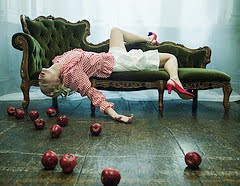There are actually two styles which are commonly used internationally: the APA and the MLA styles.
The former stands for American Psychological Association, and is a style mainly used for citing writings on social science like Psychology, Economics, Medicine, Law and so on. The latter stands instead for Modern Language Association and is one of the preferred citing styles for research papers within the liberal arts and humanities.
APA and MLA styles are slightly different from each other, though they are used in more or less the same way. It just depends on the subject we are writing on.
If we are discussing scientific issues and we want to cite references within the document, we'd better use the APA style because its citing format allows to give detailed information in a briefer and more concise way than the MLA does. Anyway, these are the general outlines of both styles:
- the first three words of the title and the page number are displayed in the top right corner of each page;
- in the bibliography page the author's last name is spelled out followed by the initial(s) of the first name;
- only the first word of the title is capitalized and in italics;
- the abstract is required;
- the source page at the end of the paper is called "References";
- for in-text citations it is required that the author's last name, date of publication are put in parenthesis, E.g., (Apples, 2007);
This is what usually happens in the APA style. Now let's take a look at the MLA style.
In MLA formatted paper:
- the author's name and page number run on the top, right corner of each page;
- the author's first and last names are spelled out on the bibliography page;
- all the major words of the title come in capital letters;
- no abstract is required;
- the bibliography information is collected in a section called " Works Cited";
- when citing references the writer has to place the author's last name followed by the page number in parenthesis.
About in-text citation, the two styles are slightly different in formatting.
In APA the rule is to follow the author-date method of in-text citation. As said before, the author's last name and the year of publication for the source should appear in the text, E.g., (Apples, 1998), and a complete reference should appear in the reference list at the end of the paper.In APA style proper nouns, authors' names and initials are always capitalized. If we're citing the title of a source within our paper we should capitalize all words that are four letters or more long: E.g., Crime and Punishment. This is not required with shorter words that are adverbs, verbs, nouns and adjectives. After a dash or colon a word should always be capitalized too: "Falling into pieces: The Confessions of an Apple- Eater".
In MLA style, referring to the works of others is mainly done by using parenthetical citations, that means, the writer puts the author's name and the page number(s) in parenthesis immediately after a quotation or the paraphrase of an idea, E.g., "Truth can never be told so as to be understood, and not be believed" (Blake 4). In the Works Cited page this in-text citation will look like this: Blake, William. Proverbs of Hell.Place of release or publication, year of publication.
The whole matter is quite difficult to explain, there are lots of things and arguments up for discussion that I think I'd better stop here..going further could turn to be really dangerous (and deadly boring!). Anyway, I believe that to know how to use this two styles properly means to know how to move without any fear in the tangled jungle of scientific writing, and thus to avoid falling into the silent traps of plagiarism. By using citation we can jump from our own text to that of somebody else's, being sure that we are not infringing any ipr (see the post below). Now, talking about the referencing style I chose for my BA thesis, I used mostly the APA style for in-text citations and referencing, but sometimes I didn't dislike to use MLA too. Summing up, I used both! But the result wasn't that terrible..maybe others didn't care about it..and neither did I, that's for sure!! Well, in my MA thesis I'm certainly going to pay much more attention to referencing style (after this blogostorming I can't just say "I didn't know it!") and I'm going to try to use at least one of them. Which one? Uhmmm, that's an hard question!I have to found a subject before, then I'll give you the answer;-)!
To be continued...
Anna
















0 comments:
Post a Comment